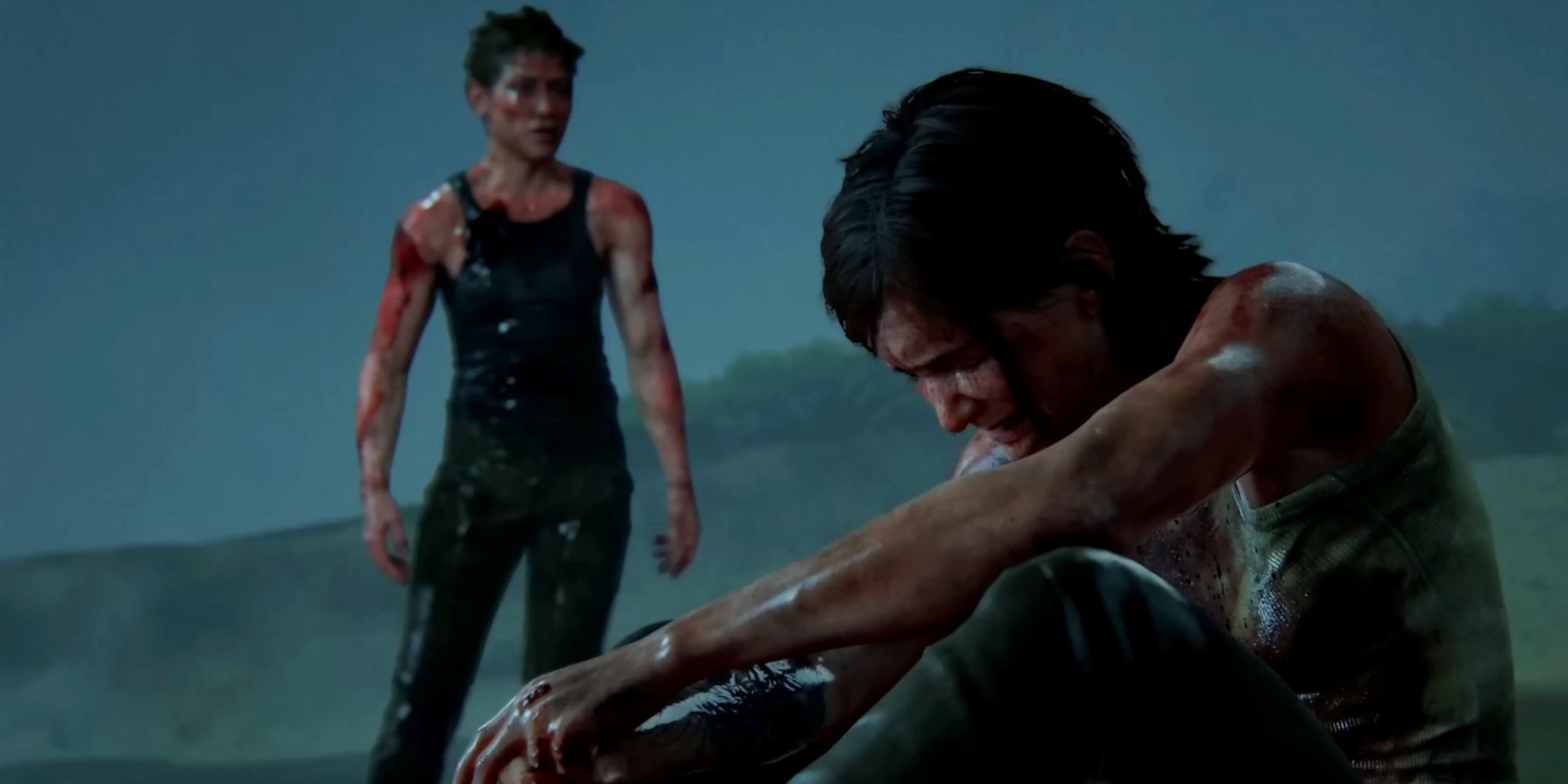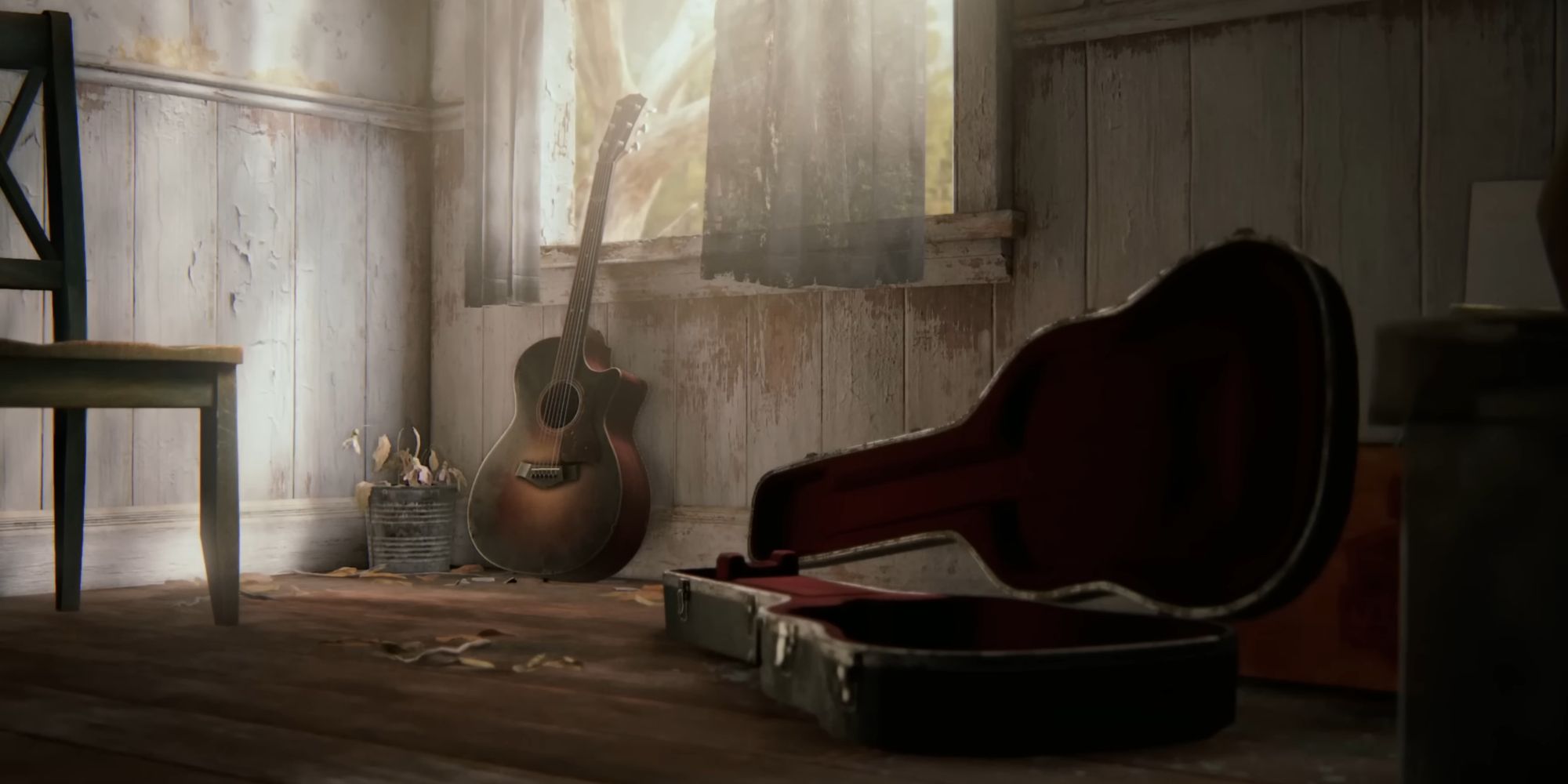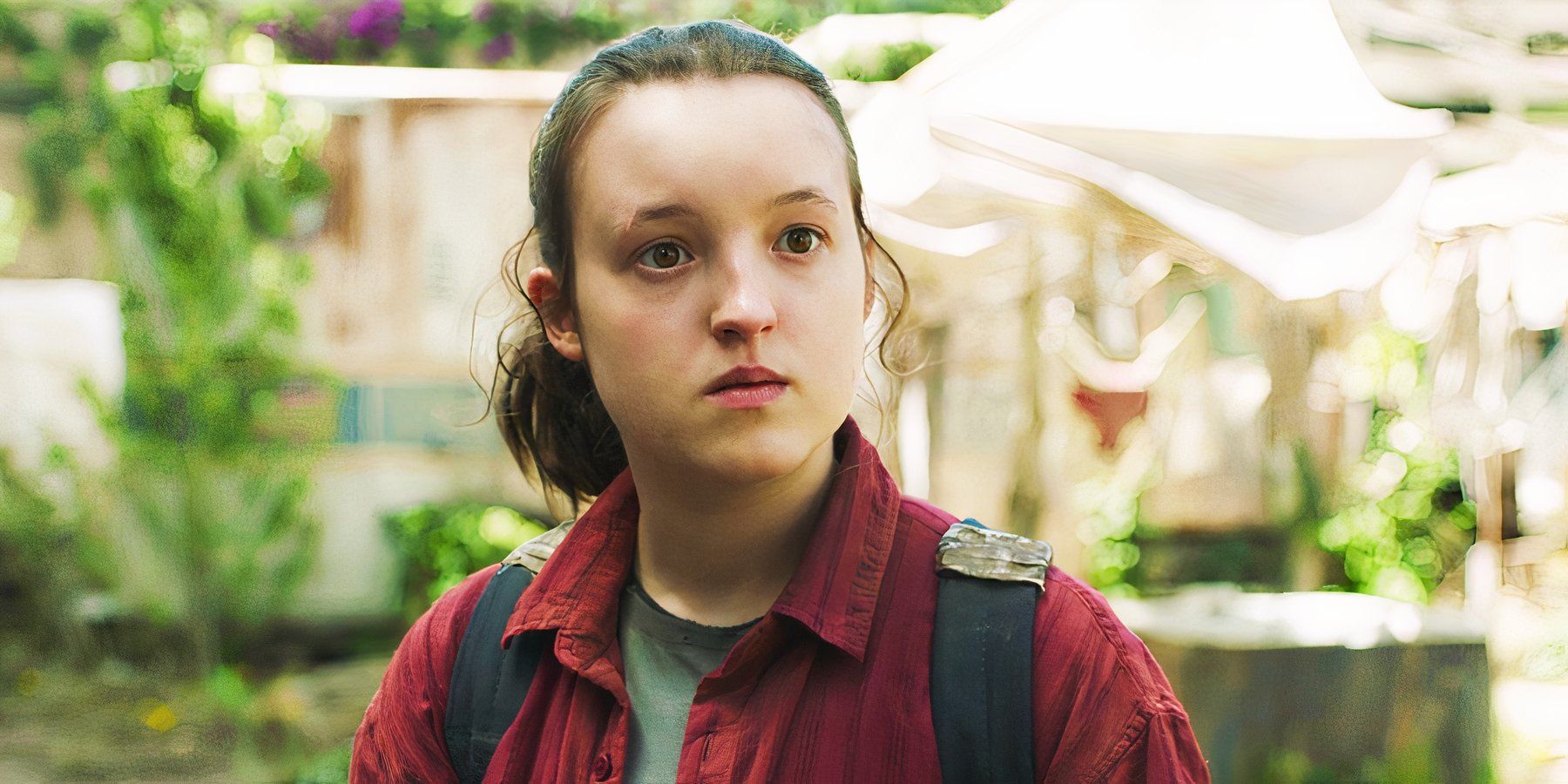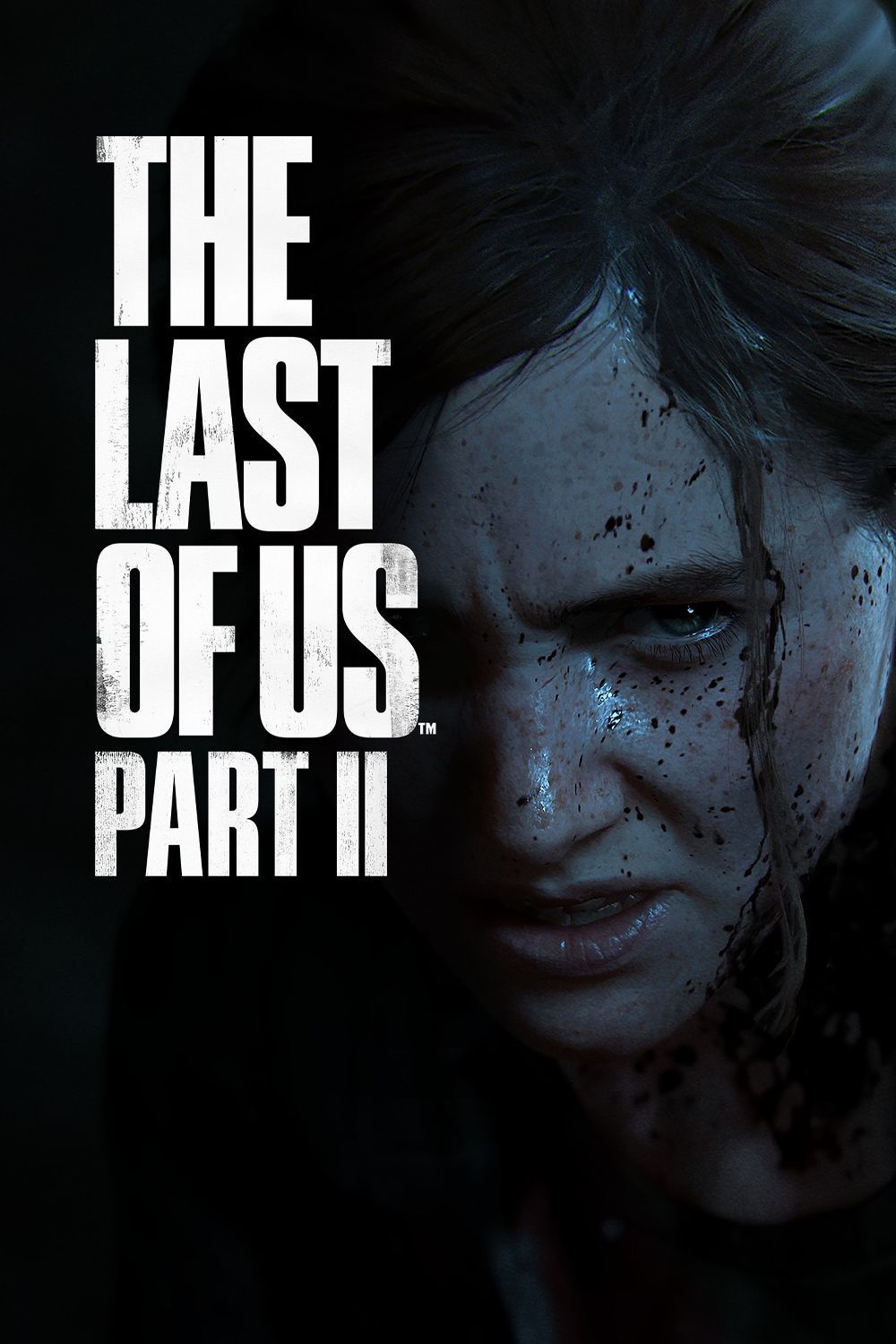Summary
-
The Last of Us Part 2
is a brutally violent game that explores the consequences of revenge and cyclical violence. - Ellie is unable to find closure regarding Joel’s death, and mistakenly believes revenge is the only means to accomplish it.
- Ellie’s actions at the end of
TLOU 2
are difficult to understand, but they stem from the series’ ideas on found families and the capacity for forgiving the unforgivable.
Naughty Dog’s The Last of Us Part 2 is a devastating tale of parallel protagonists. Its inciting incident is a brutal torture sequence, and the game only spirals into more stomach-turning violence from there on. By the time TLOU 2 reaches its unflinchingly bloody finale, it’s difficult to feel as though something has actually been accomplished after experiencing a narrative that has only plummeted wildly into chaos. The Last of Us Part 2‘s core tenet seems to be a warning that violence only begets violence, and the game’s focus on insatiable revenge only leaves those involved with traumatic uncertainty.
[Warning: Spoilers for The Last of Us Part 2.]
The beginning of the end for The Last of Us Part 2 comes alongside the first “The Farm” chapter, following an extended stint playing as Abby, recounting the three days in Seattle that were first experienced from Ellie’s point of view. With a halting word from Lev, Abby spares Dina and Ellie in the theater. The latter two attempt to start an idyllic life on a farm raising JJ, Jesse and Dina’s son. Abby and Lev, on the other hand, eventually make their way to Santa Barbara in search of the Fireflies, who are rumored to be regrouping.
Related
The Last Of Us Part 2 Remastered Review: “Among Gaming’s Best-Told Stories”
The Last of Us Part 2 Remastered is a relatively small graphical leap, but a host of new additions make it an attractive rerelease for longtime fans.
Ellie Can’t Move Past Joel’s Death
The Farm
To say Ellie is haunted by Joel’s murder is an understatement. Clanging farm tools and a slamming barn door trigger a panic attack, almost assuredly a symptom of post-traumatic stress. Ellie has a vision of Joel, mid-torture, calling out to her for help. It’s a corrupted, false recollection of his final moments, steeped in the survivor’s guilt Ellie has dealt with since Riley’s shocking death in The Last of Us: Left Behind. Her guilt is likely exacerbated by more recent events as well – Jesse was killed, Tommy lost an eye, and Ellie even admitted to Abby that she blames herself for Joel killing Abby’s father.
For Ellie, there was only one way to avenge Joel: killing Abby. Now, she’s settled down to a quiet life, and even though she killed all of Abby’s friends, her mission remains unaccomplished, misguided as it is. Dina is adamant that they need to move on, which is probably the best course of action. According to Tommy’s intel, Abby is hundreds of miles away with Lev in California. Perhaps Ellie would have eventually been able to move past this ordeal if she’d never learned of Abby’s whereabouts, but now she’s been given one more chance at some twisted version of closure.
In many ways, it’s a clever foil to themes explored in the first game. Throughout Part 1, Joel has trouble accepting a new found family – Ellie’s survival and deliverance to the Fireflies is just a job; he knows getting close to people, especially fragile children, is a huge risk almost guaranteed to end in emotional turmoil. In Part 2, Ellie has a similar stubbornness in both moving on from Joel, and fully embracing a relationship with Dina. She’s stuck between two found families, and is experiencing many of the emotions Joel was initially afraid of.
After the episode with Tommy, there’s a flashback to the dance where Ellie and Dina shared their first kiss, which is followed by a brief confrontation with Joel, who stepped in to defend Ellie when homophobic slurs were directed at her. Joel is only trying to help, but a previous flashback revealed that their relationship has passed a breaking point after Joel admitted to what he’d done in Salt Lake City at the end of The Last of Us Part 1 – killing the Fireflies to stop Ellie’s fatal surgery that might’ve resulted in a vaccine. At this point, it’s hard to see the pieces falling into place. If Ellie has forsaken Joel, why is she destroying her own life to get revenge?
The first game’s emphasis on found family offers a partial answer. Ellie grew up alone in the Boston Quarantine Zone, and lost her best friend, Riley, at a young age, a traumatic event that coincided with the discovery that she’s immune to the Cordyceps brain infection. But as Joel says in the opening cutscene of Part 2, “You go halfway across the country with someone…” and it’s impossible to let them go. Ellie’s found another family, Dina and JJ, but there’s no replacement for Joel. Even if it means losing her new family – and Dina makes it clear when Ellie leaves the farm that seeking out Abby again will mean the end of their relationship – Ellie has “to finish it.” To her, there’s no other option for closure.
Ellie Lets Abby Go
Santa Barbara
After tracking Abby to Santa Barbara, finding her and Lev enslaved by a group known as the Rattlers, freeing her, and forcing her to fight by pressing a knife to Lev’s throat, Ellie lets Abby go. Even though Ellie is clearly not acting rationally, the decision to just walk away is baffling. The most immediately apparent interpretation is that Ellie has had a last-second realization that she is about to tear apart another family. Abby’s friends are all dead, Lev’s family is gone as well, and he’s essentially been excommunicated by the Seraphites – they only have each other left. Ellie ultimately can’t bring herself to do to Lev what Joel did to Abby, and what Abby did to Ellie.
If the parallel narratives weren’t enough to drive it home, Ellie and Abby are foils – not exactly two sides of the same coin, and constantly at odds despite their similarities. What Ellie finds at the end of The Last of Us Part 2 is a disparate pair, not unlike her and Joel. Abby carries an unconscious Lev to the beach outside the Rattler compound. Lev is the only close relationship Abby has left, much like Joel and Ellie at the end of Part 1. Abby carries her ward in search of community among the Fireflies, just as Joel carried his in search of a new home in Jackson.
Abby carrying an unconscious Lev mirrors Joel carrying an unconscious Ellie at the end of the previous game.
Even though she has spent the entire game seeking revenge for Joel’s death, Ellie still harbors resentment for what he did in Salt Lake City. It’s perhaps some timely clarity that killing Abby isn’t going to redeem Joel nor end her suffering, but would surely contribute to Lev’s. It’s a poignant final note that the climactic scene involves these three – Lev stops Abby from killing Ellie in the theater, Abby agrees to fight Ellie here to save Lev, and Ellie stops herself from drowning Abby after a vision of Joel. Abby spends most of the game as a foil to Ellie, but she has become a closer figure to Joel.
Ellie Is Trying To Forgive Joel & Abby For The Unforgivable
The Farm
As Ellie returns to the farm, and plays some dissonant chords on the guitar Joel gave her, courtesy of a couple fingers viciously bitten off by Abby in their brawl, The Last of Us Part 2 offers one final flashback. A heavy conversation between Joel and Ellie after the dance in Jackson illuminates the status of their relationship prior to Joel’s death. While it begins with Ellie establishing some needed distance from her overbearing father figure, it quickly turns to Ellie’s burgeoning relationship with Dina before Ellie steers it toward the real reason she came to Joel’s porch.
She says, “I was supposed to die in that hospital. My life would’ve fucking mattered. But you took that from me.” After Joel admits he’d kill the Fireflies to save her again given the chance, Ellie says, “I don’t think I can ever forgive you for that. But I would like to try.” Herein lies the final indication as to why Ellie doggedly pursued Abby for revenge. Some sort of misguided sense of justice certainly played a part, but more importantly, Abby robbed Ellie of a chance at forgiving Joel. In turn, Joel can never be redeemed in Ellie’s eyes; he’ll forever be the unforgivable transgressor he was when he died.
The image of Joel flashing across the screen which prompts Ellie to let Abby live suggests Ellie will take a similar tack with Abby. Her killing Joel is unforgivable, just as Joel killing the Fireflies is. Perhaps forgiveness for both is impossible, but Ellie is going to try anyway. Does Abby deserve forgiveness? Probably not, but neither does Joel. Lev deserves Ellie’s mercy, though; it’s because of him Ellie is even alive. Now, after saving Abby and Lev, that debt is paid, even if the balance between Abby and Ellie can never truly be reconciled.
Ellie’s future is uncertain, and is likely to remain so unless a The Last of Us Part 3 is ever developed. The final shot of Part 2 has Ellie leaving Joel’s guitar in the farmhouse, which already has moth-eaten curtains and peeling paint, suggesting Dina and JJ moved out shortly after Ellie set off for Santa Barbara. She’s unable to play the guitar in the way Joel taught her, losing her final connection to a man that was so dear to her – maybe a sort of punishment for the violence she wrought in his memory, and a final erasure of Joel through Abby’s actions.
Will she return to Jackson? Tommy won’t be pleased Abby is still alive, much less that Ellie saved her life, and Dina is unlikely to welcome Ellie back into her life. Her continued mission has committed irreparable damage to her family, and has probably rendered her completely alone. In the end, there is no eye for an eye – as the unsubtle imagery of Tommy being the only one to literally lose an eye indicates – and any apparent symmetry in justice or redemption is just an illusion. In The Last of Us Part 2, there is no grand balancing of the scales, just the desperation to keep hold of what precious little remains intact: the last of us.
How HBO’s The Last Of Us May Adapt Part 2
Multiple Seasons Will Complicate Its Ending
The continuation of HBO’s adaptation is expected in 2025, and it’s been confirmed that The Last of Us season two will comprise seven episodes, one shorter than its predecessor. In an interview with Dateline, showrunners Craig Mazin and Neil Druckmann (the latter being The Last of Us Part 2‘s director) discuss the difficulties of telling one contiguous story across multiple seasons of a television show. Part 2 is broken up into fairly clear-cut sections, but it’s an essentially seamless story, and relies heavily on its regular flashbacks.
A largely faithful adaptation, similar to how closely season one followed the first game, wouldn’t necessarily cause any writing issues, but it is a significantly longer game, and it balances many more characters. A bold strategy would be to emulate the game’s three acts with three separate seasons – one for Ellie’s journey through Seattle, another to recount those days from Abby’s perspective, and a final season which sees Ellie travel to Santa Barbara. This would, however, risk Part 2‘s story becoming disjointed, with important characters being absent from multiple episodes.
The Last of Us season two is likely going to need more creativity in adaptation than season one. It’s possible that Joel’s role will be expanded prior to his violent death, giving Pedro Pascal more time in the role, and allowing viewers a better understanding of Joel and Ellie’s relationship beforehand. This could, unfortunately, take some of the gravitas from Ellie’s final flashback, which comes late in the game as an emotional revelation. This would, however, give the reportedly longer season three plenty of room to tell Abby’s side and reach Part 2‘s finale.
Mazin and Druckmann seem to indicate that TLOU Part 2‘s adaptation will extend beyond seasons two and three, with Mazin telling Dateline, “I don’t see how we could tell the story that remains after season two is complete in one more season,” and, “the story may require season four.” It’s an interesting prospect, and a teleplay could certainly work with a lot of the unseen material in Part 2. Although Druckmann has previously indicated there is one more chapter to the Last of Us games in the form a potential third game, it seems unlikely the show will venture beyond The Last of Us Part 2 before another game is released, unless the show takes a significant divergence.
Source: Dateline









